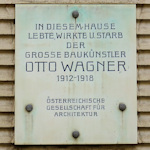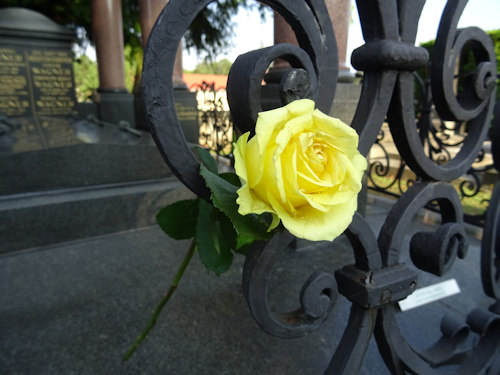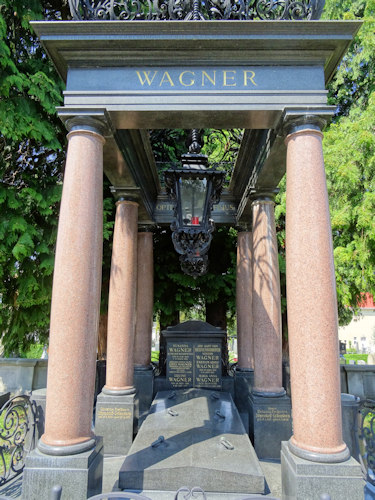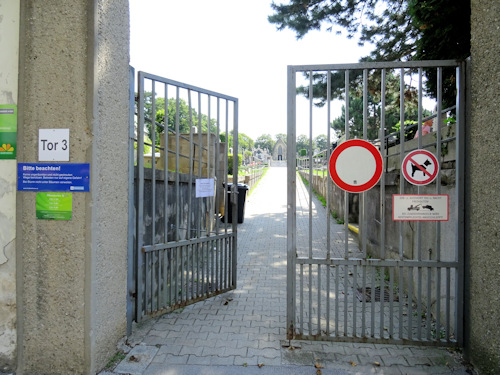
The year 1918 left its mark on Viennese art, not least for taking away some of the city’s great creative minds, like Gustav Klimt or Egon Schiele. And, unfortunately, Otto Wagner too, whose grave is in Vienna’s Hietzing cemetery.
- Wagner-designed granite columns and wrought iron railings
- Other members of Wagner’s family are buried here
- The Hietzing cemetery is open to the public
- See also:
How to find Wagner’s grave

(Still remembered by well wishers)
The 76-year-old Wagner died on April 11th at his home in an apartment building he designed himself: Döblergasse 4 in Vienna’s seventh district. The cause was Erysipelas, a skin infection treated readily with antibiotics today, but not (unfortunately) in pre-penicillin 1918.
A paper of the time noted (my translation):
One of the most prominent and fascinating personalities in the modern Viennese art world has passed away today.
Wagner’s last resting place is Grave 131 in Group 13 at the Friedhof Hietzing (Hietzing Cemetery – Maxingstraße 15, 1130 Vienna), where he was buried on April 14th.
The mayor of Vienna spoke at the funeral and used the prophetic words (my translation):
Otto Wagner will not be forgotten.

(Several family members lie within the large grave)
The cemetery adjoins the beautiful park of Vienna’s Schönbrunn Palace, and you’ll find the precise location on the Wagner map at the end of this article.
To get there, take a (roughly) 15 minute walk up up from the Hietzing subway station, which is on the U4 line. Alternatively, take buses 56A, 56B, 58A, or 58A from Hietzing up to the Tiroler Gasse stop.
After arriving, enter the cemetery through Tor 3 (Gate 3), which is opposite the address Maxingstraße 54 and should be open for most of the day. You can check opening hours on the cemetery’s German website (scroll down for Öffnungszeiten).
Once inside the gate, go straight up the path toward the set of steps and chapel-like tomb you can see ahead of you.
At the top of those steps, take the first path leading off to the right. About 25 paces along there’s a large grave with red granite columns and the inscription “Wagner” at the top.
Wagner designed this family grave himself after his mother’s death in 1880. It’s a rather well-kept, magnificent affair with six columns creating an open rectangle roofed in wrought iron scrolling. Since it possesses honorary grave status, the city of Vienna takes care of the maintenance.

(The best cemetery entrance for reaching the grave)
At the rear of the grave’s roof, the words Optimae Matri Filius appear, which means (roughly), the son for the best mother.
Various members of the Wagner family are buried here, including, for example, his mother (Susanna Wagner), and his second wife, Louise. The name Christine Freifrau von Lütgendorff-Gyllenstorm (one of Wagner’s daughters) also shows up along with Hermann Freiherr von Lütgendorff-Gyllenstorm (her husband).
Incidentally, a couple of other locations associated with famous sons of Vienna lie very close to Wagner’s grave: Klimt’s grave and the house where Johann Strauss II wrote Die Fledermaus.